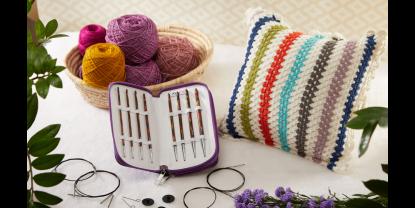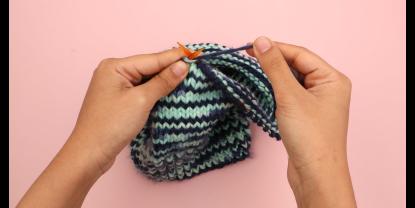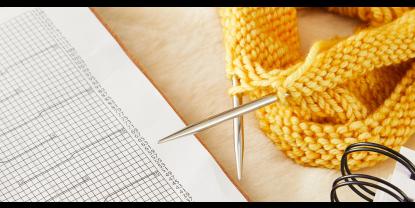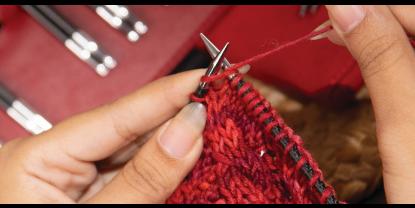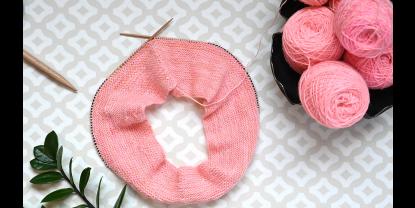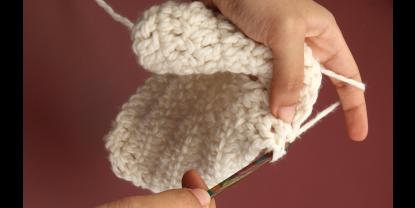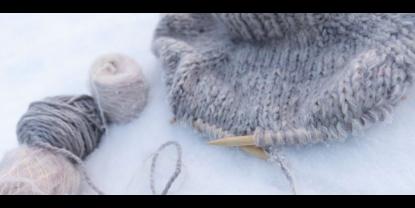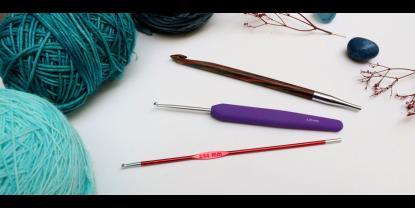Circular knitting needles have been a game-changer and it’s because of the convenience of cables. Ask the experienced knitters and you will know how they swear that cables have changed their knitting style and crafting experience. Be it socks, a blanket, a sweater, or a scarf, cables help accommodate any project you want to knit. Choosing the right cable length for your circular knitting needles can make the difference between a smooth, enjoyable experience and one filled with unnecessary frustration. In this blog, let’s break down how to choose the perfect cable length.
Why Cable Length Matters in a Knitting Project?
Connecting two needle tips, cables are the flexible connectors. They are fixed in a fixed circular needle, while the cables can be changed in an interchangeable circular knitting needle setup. They come in varying lengths. Whether you want to knit in the round or work larger projects back and forth (flat), cables make this possible.

Sometimes, when working on a project, you may realize your stitches are either bunched up too tightly or spread out too far. You are not doing wrong; the culprit is the cable length.
Not all cables fit every project.
If it’s too short, stitches get crowded together, making it difficult to move and increasing your chances of dropped stitches. If it’s too long, stitches will stretch, distorting your fabric and making your knitting rhythm awkward.
Before going ahead, it’s important to read.
Also Read: The ultimate guide to circular knitting needles
Tip 1 - Understand the Project Requirements
Ask yourself: what are you knitting? How are you knitting? A sweater can be knit flat in segments or knit in the round, so decide the cable length accordingly. For socks, you can either choose a length that fits naturally or go for the length suitable for knitting the magic loop technique.
Tip 2 - Match the Lengths to Projects
Choose the cable length according to the project. If you know that you will be requiring different lengths throughout the projects, go for an interchangeable needle.
40 cm (16”) cables are perfect for most adult or child-sized hats, while socks, sleeves, and baby hats work with 25–30 cm (10–12”) cables. Mini interchangeable needles with 5cm (2”) needle tips and cables in matching lengths are the perfect fit for small circumference projects. 60 cm (24”) or 80 cm (32”) cables provide enough space for infinity scarves and cowls. Sweaters, cardigans, or other garments’ body area can be knit in the round smoothly with 80 cm (32”) or 100 cm (40”) cables are ideal for knitting in the round. For oversized sweaters or ponchos, you may go for a 120 cm (47”) cable. For shawls, blankets, or large projects, browse 100 cm (40”) or longer cables of 150 cm (60”).
For the magic loop technique, the cable length does not follow the same rules. The smaller circumference project requires a cable that is twice or at least 3 times wider than the project itself. Choosing the best circular knitting needles for the magic loop helps you make the right decision.
A handy trick is, when in doubt, go slightly longer. It’s easier to slide stitches along a roomy cable than to cramp them on a short one.
Tip 3 - Choose Between Fixed and Interchangeable Circular Needles
Both fixed and interchangeable circular needles offer cables, which are almost of the same length. However, knitters have their own preference regarding one or the other. Fixed circular needles with their permanent cable connection are ideal for knitters who prefer a seamless, lightweight setup for specific projects. If you are going to work on a shawl, the needles will assist you from start to end. While for a sweater, you start with a different length for the neckline and alter it according to the body or waist. Interchangeable circular needles, on the other hand, give you flexibility.
With KnitPro’s interchangeable knitting needle systems, you can choose any cable length for the same pair of tips. The perfect choice for knitters who juggle multiple works-in-progress. Plus, you can always needle sizes or cable lengths according to the needs of your project.
Tip 4 - Consider Gauge and Tension
Your knitting tension can subtly influence your cable choice. If you’re a tight knitter, using a slightly longer cable can help prevent crowding. Loose knitters, however, may prefer a shorter cable to maintain shape and control.
Additional Tips for Storing and Caring for Your Cables
Cables are an essential part of a knitter’s toolkit. With a little TLC, they’ll be happily serving your projects. So, here’s what you need to do to keep your cables in top shape:
- Avoid tightly coiling them; fold in a relaxed manner.
- Warm them up gently with your hands or warm water. This is the secret of smooth knitting and care for the accessories.
- Try KnitPro’s needle storage cases and accessory pouches to keep all your cables, connectors, and keys within easy reach.
Ultimately, the right cable length can completely transform your knitting experience. So, before you cast on your next project, take a moment to choose right. Browse through the KnitPro collection for circular knitting needles in various lengths. Choose cables with a 360-degree swivel mechanism for smooth crafting for every knitting project.
Ready for your next project? Explore our collection and find the perfect match for your creative journey.






